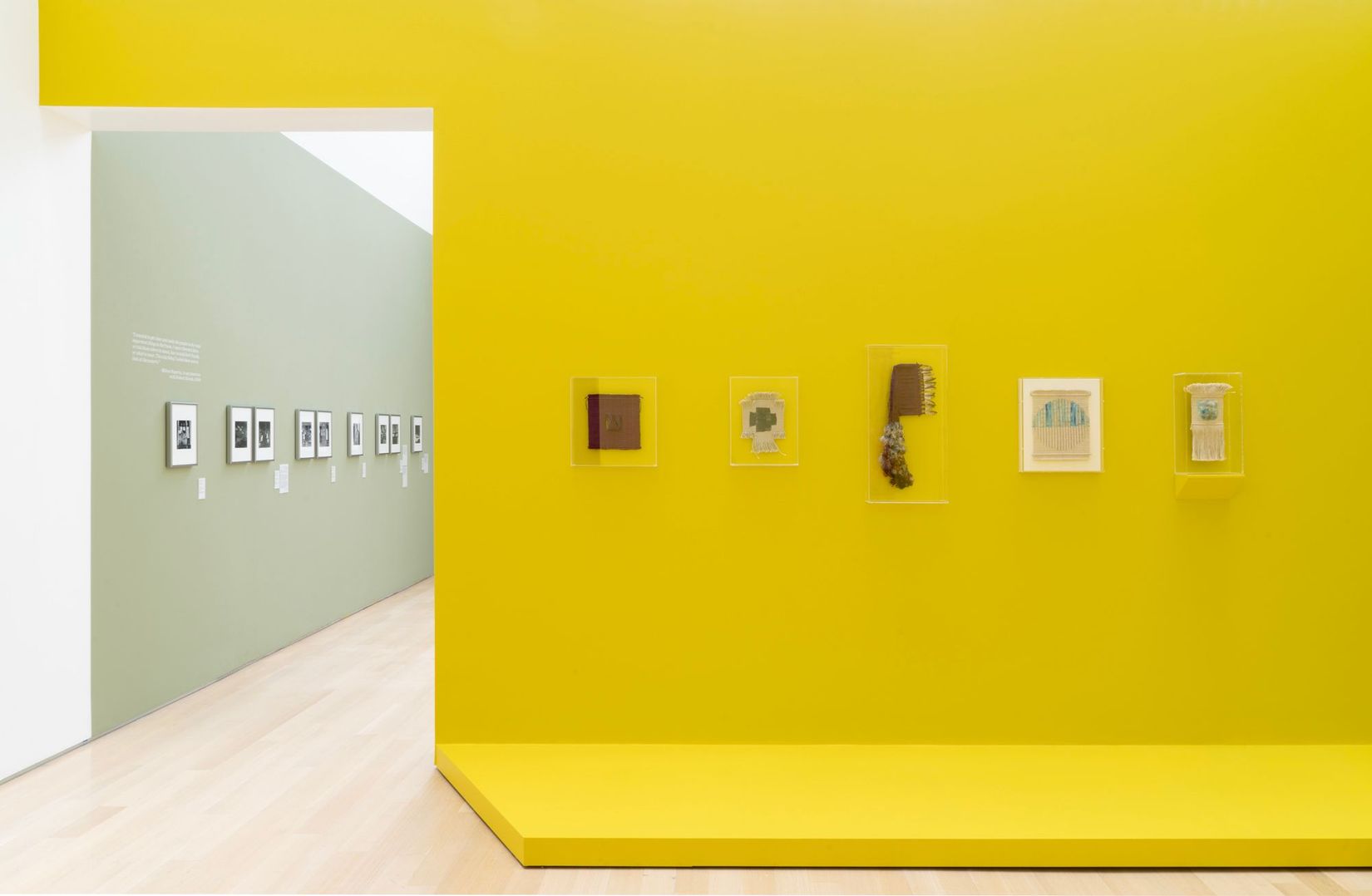LENORE TAWNEY: Holding us in wonder
Information About the Event
On View
Buchwald-Wright Gallery, Free Admission
Acknowledgements
The Gund programs and exhibitions are made possible, in part, by The Gund Board of Directors and the Ohio Arts Council.
Donors/supporters

Lenore Tawney (1907–2007), also known as the Grande Dame of Textiles, was a groundbreaking figure in the fiber arts movement, whose radical approach to weaving redefined the relationship between craft and contemporary art. Often associated with the New York avant-garde, Tawney was born in Lorain, Ohio. She spent her early years in Ohio and Chicago, connecting her to the Midwest’s strong craft traditions, which laid the foundation for a lifelong exploration of fiber as both a medium and a language. Her work abandoned the traditional grid structure of the loom, giving way to open, sculptural forms that carry both spiritual and conceptual weight.
Lenore Tawney was a pioneer in blurring the lines between textile art and sculpture. Her woven works became three-dimensional, hanging freely and often resembling large, suspended forms or abstract sculptures. This shift away from traditional two-dimensional weaving was radical at the time and helped to elevate fiber arts within the broader contemporary art world. Her work is often imbued with a spiritual or meditative quality. Her weaving practice is influenced by mysticism, ritual, and connection with the natural environment. This metaphysical approach made her a precursor to many later artists who explored textiles not just through form, process, and material, but as a conceptual medium.
Tawney’s contributions thus helped bridge the gap between modernist textile art and the more conceptual art movements of the 20th century. She was also one of the key women artists who helped elevate fiber arts as a serious form of artistic expression. Her refusal to limit herself to traditional ideas of craft challenged the gendered perception of fiber and textile arts, laying the groundwork for the feminist art movements of the 1970s, in which women artists used domestic and craft-based materials to challenge gender norms. Like her work, this presentation of her practice aims to further establish her as a seminal voice in the movement that has influenced numerous generations of artists.
Adjacent to this exhibition is a presentation of Claudia Alarcón and the Silät Collective. Though they never met, placing their practices in close proximity creates a compelling dialogue about weaving as an expansive medium, one that shifts between sculpture and tapestry, liberated from the constraints of the loom. In both artists’ work, weaving becomes a language for the unseen through abstract expressions that range from striking to subdued, always attuned to the senses.
- The title of this exhibition is inspired by a short introduction written by the painter Agnes Martin about Leonore Tawney’s first solo exhibition at the Staten Island Museum in 1961. The last line of her text reads as follows: This is an urgency that sweeps us up, an originality and success that holds us in wonder.

Installation view of "Lenore Tawney: Holding us in wonder." On view at The Gund at Kenyon College Fall 2025. Image by Luke Stettner.

Installation view of "Lenore Tawney: Holding us in wonder." On view at The Gund at Kenyon College Fall 2025. Image by Luke Stettner.

Installation view of "Lenore Tawney: Holding us in wonder." On view at The Gund at Kenyon College Fall 2025. Image by Luke Stettner.

Installation view of "Lenore Tawney: Holding us in wonder." On view at The Gund at Kenyon College Fall 2025. Image by Luke Stettner.